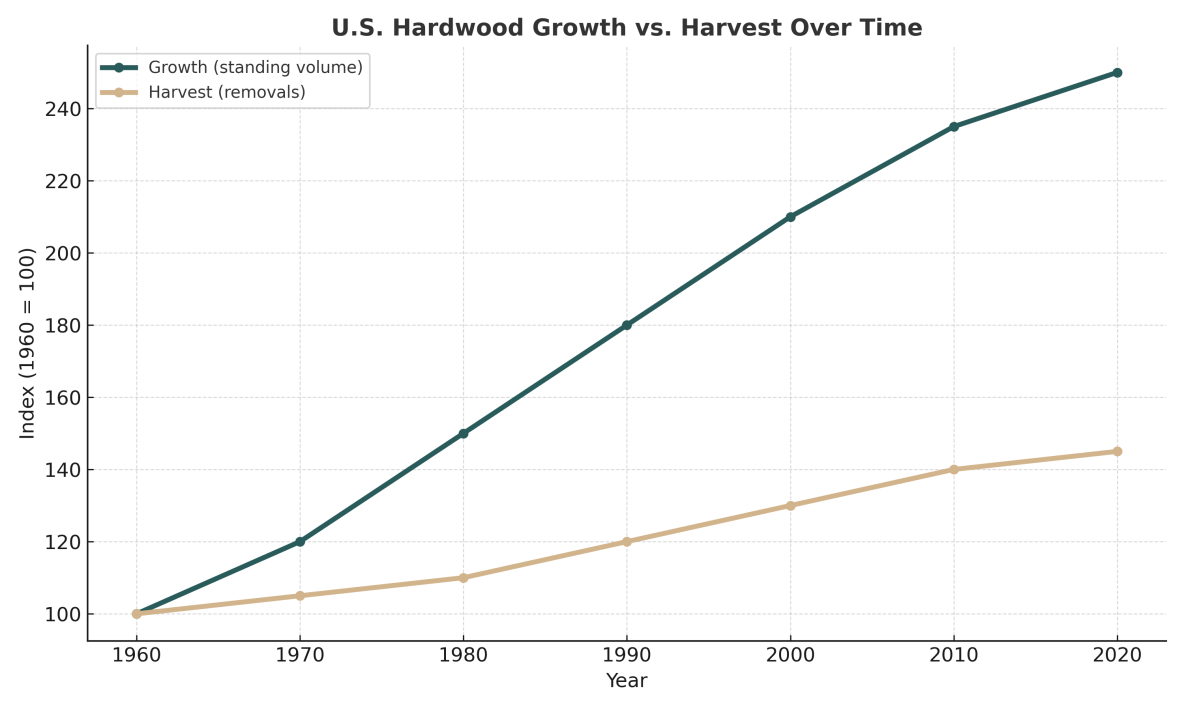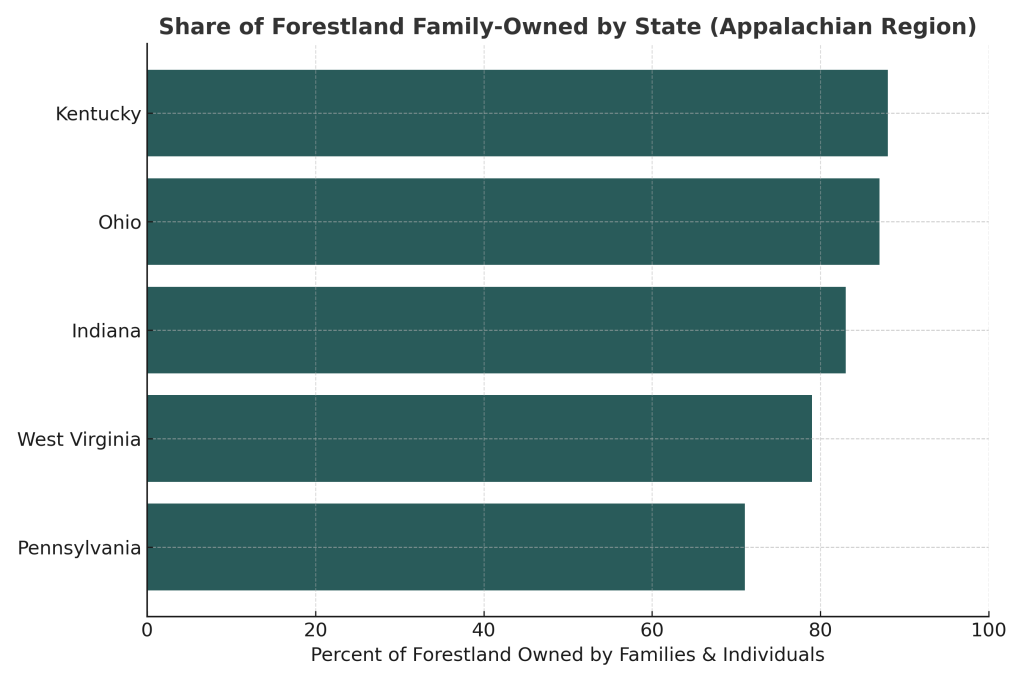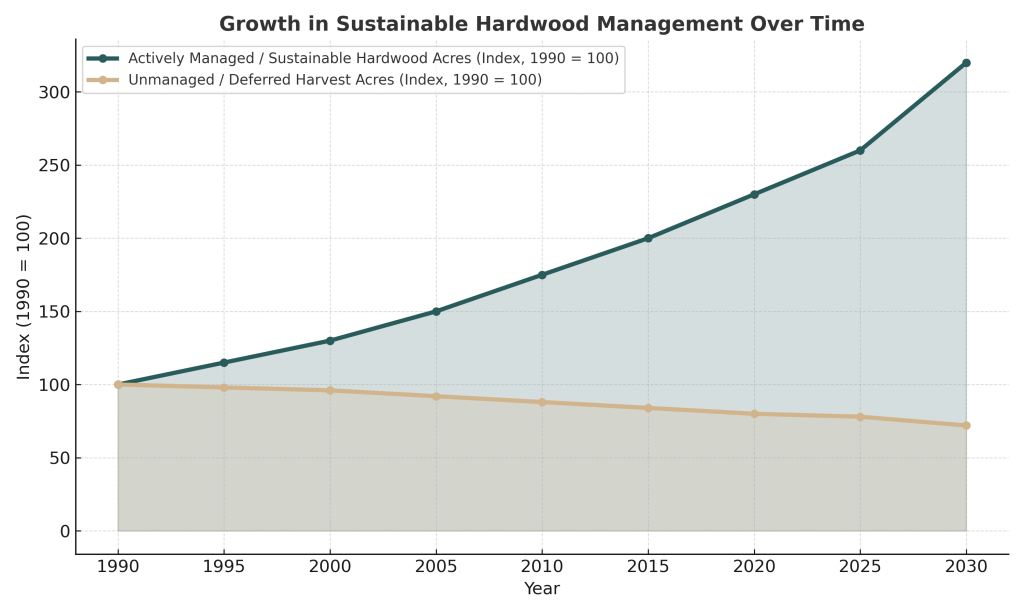A Nation of Private Forest Owners
When people imagine America’s forests, they think of vast public lands in the West — the national parks, national forests, and wilderness areas. These are managed by the federal government. Yet the reality is that most of the nation’s timberland is privately owned, and much of it lies east of the Mississippi River. Family landowners — not corporations or agencies — are the true backbone of American forestry.
Public forests still matter, but it’s the privately owned acres that make up the majority. These lands supply the majority of the nation’s hardwood lumber, veneer, and log exports. Every cabinet, barrel stave, or walnut table built in America owes its origin to the choices made by small woodland owners.
The Changing Face of Timber Ownership
The story of timber ownership in America has evolved dramatically over the last century. In the early 1900s, industrial mills and paper companies owned huge tracts of land. By the 1950s, those holdings began to fragment, and by the 2000s, many corporate lands had been sold to TIMOs and REITs.
Today, the pendulum has swung back toward individuals and families. Ownership diversity has increased, as small-acreage holdings dominate the hardwood-rich regions of the Midwest and Appalachia. This shift has changed both the economics and the ecology of America’s forests — from centralized industrial management to a patchwork of family stewardship.
In other words, the heart of America’s hardwood supply is controlled not by institutions but by families. The economic value of that ownership is immense: the forest industry contributes roughly $25 billion annually to Ohio’s economy and supports over 40,000 jobs in logging, saw milling, and secondary manufacturing.
Who Owns the Woods of Ohio and the Appalachians?
Ohio is a prime example of this national trend. The state contains roughly 7.9 million acres of forest, and about 87% of it is privately owned. These forests — primarily oak, maple, and walnut — make up one of the most productive hardwood regions in the United States.
Neighboring states follow a similar pattern:
- Indiana – 83% privately owned
- Kentucky – 88% privately owned
- West Virginia – 79% privately owned
- Pennsylvania – 71% privately owned
Why Ownership Patterns Matter
Who owns the forest determines how it’s managed. Family ownership means decisions are guided by long-term goals — passing land to children, maintaining wildlife habitat, or occasionally harvesting mature trees for income. This stands in contrast to short-term industrial harvest models that dominated parts of the South and Pacific Northwest.
Biodiversity also benefits. Family-owned forests often include a mosaic of habitats — ridges, bottomlands, and field edges — supporting songbirds, deer, turkey, and pollinators. Ownership diversity creates ecological resilience at a regional scale.
The Next Generation of Forest Stewards
One of the least-discussed aspects of timber ownership in America is age. The average private woodland owner today is over 60 years old. Over the next two decades, millions of forested acres will change hands through inheritance or sale.
This transition represents both a challenge and an opportunity. New landowners often have little forestry experience, yet they will make key decisions about harvests, conservation, and land use. At Ohio Timber Works, we believe this next generation of forest owners will shape the future of the American hardwood economy. Our role is to help them make informed, sustainable, and financially rewarding choices — not just for today, but for decades ahead.
Hardwood Growth vs. Harvest: A Story of Sustainability
Despite fears of overharvesting, America’s hardwood resource has expanded steadily for decades. Forest Service data shows that hardwood growth continues to outpace harvest, even in high-value regions like Ohio and Kentucky. This growth reflects responsible management by private landowners and an improving balance between timber production and conservation.

Looking Forward: Private Ownership and the Future of American Timber
The next chapter of timber ownership in America will be written by families. Whether those acres stay productive, diverse, and profitable depends on the choices of individual owners — when to harvest, what to leave standing, and how to ensure regeneration.
Ohio Timber Works is here to help guide that process with on-site assessments, transparent pricing, and sustainable harvest planning that respects the long-term health of your woods. Responsible ownership and good stewardship go hand in hand — and both are what keep America’s hardwood forests thriving.
Contact Ohio Timber Works today to discuss your timber and learn how private ownership can be both sustainable and rewarding.
Visit our timber sales and logging section to learn more about harvesting your timber.



